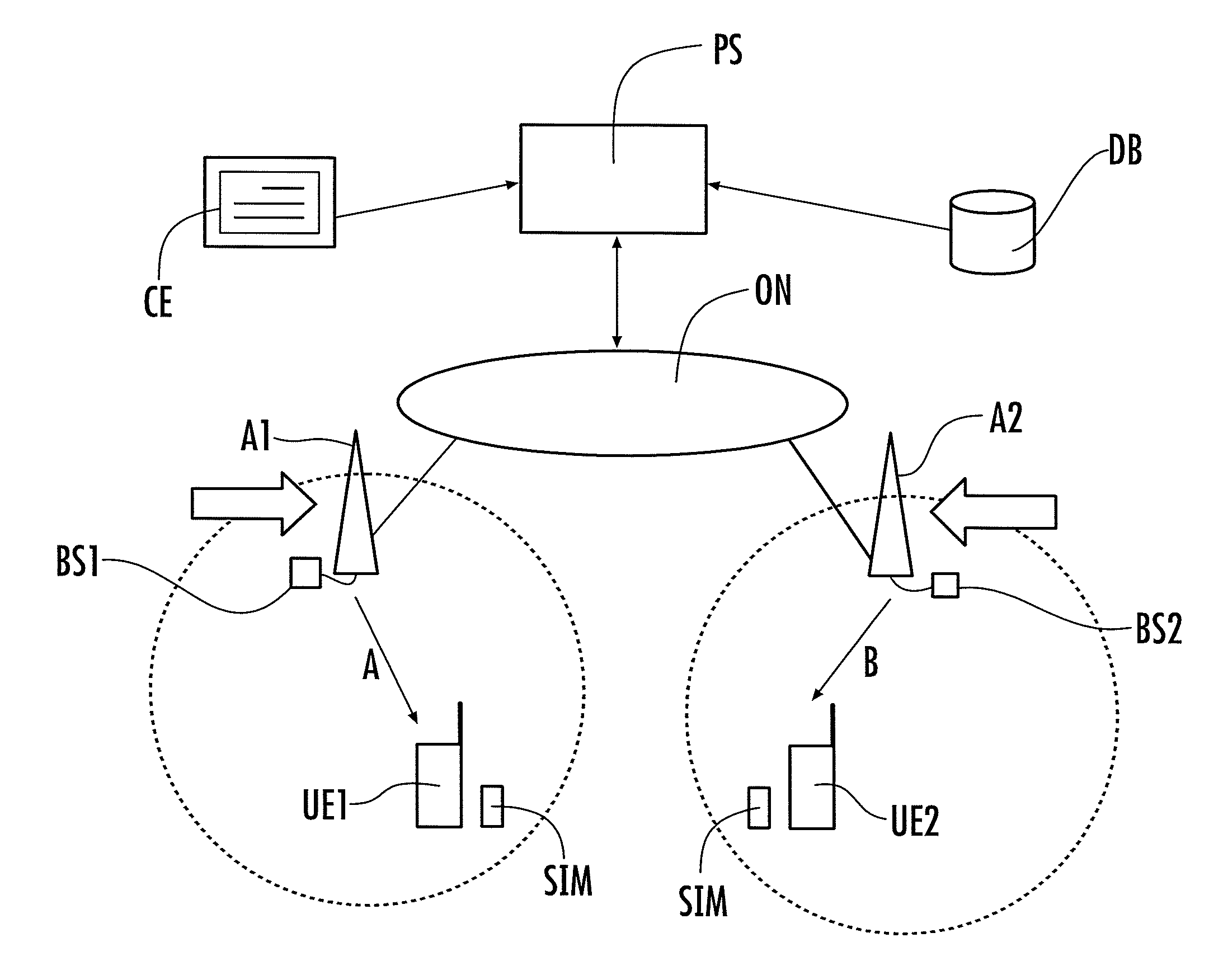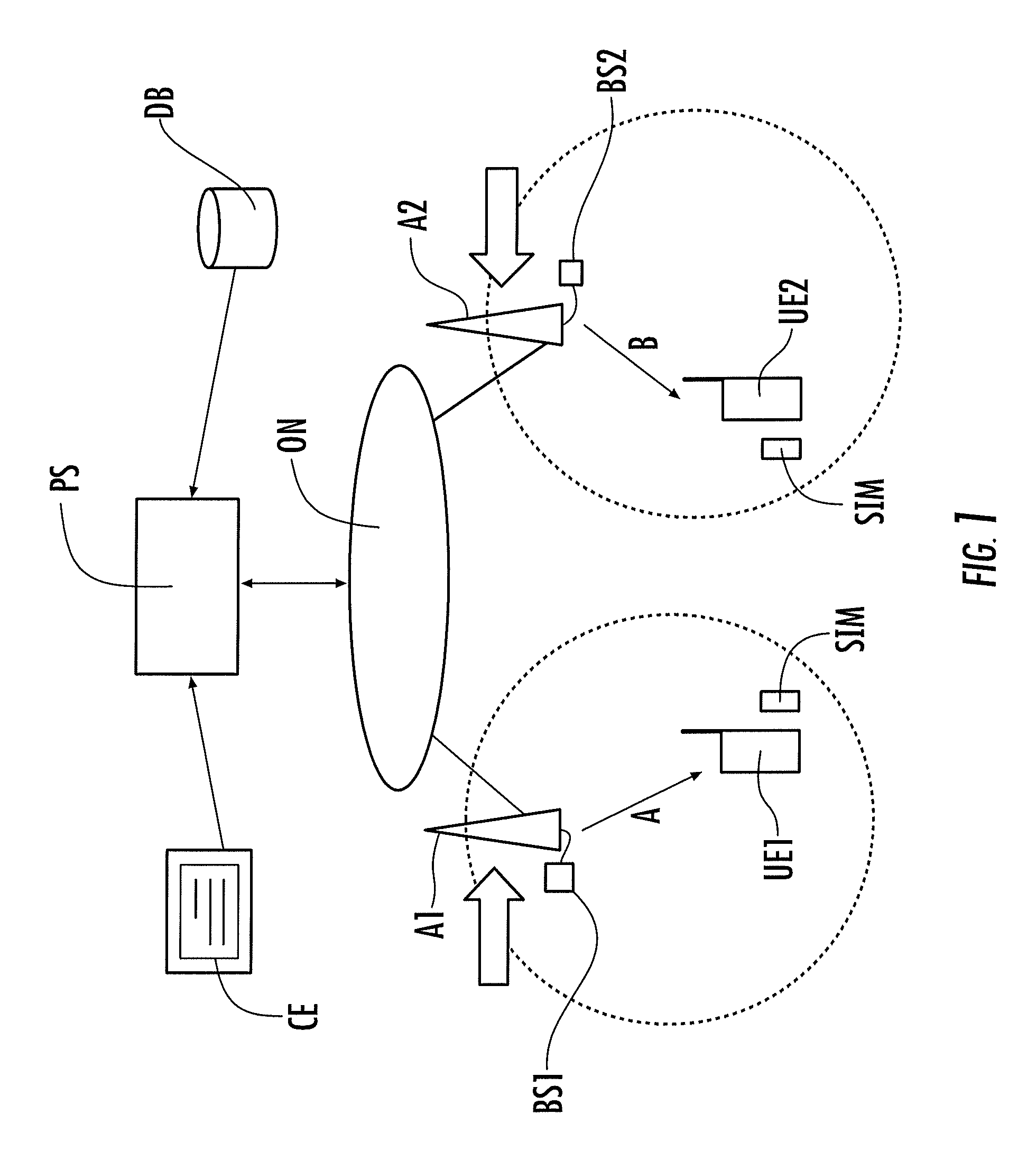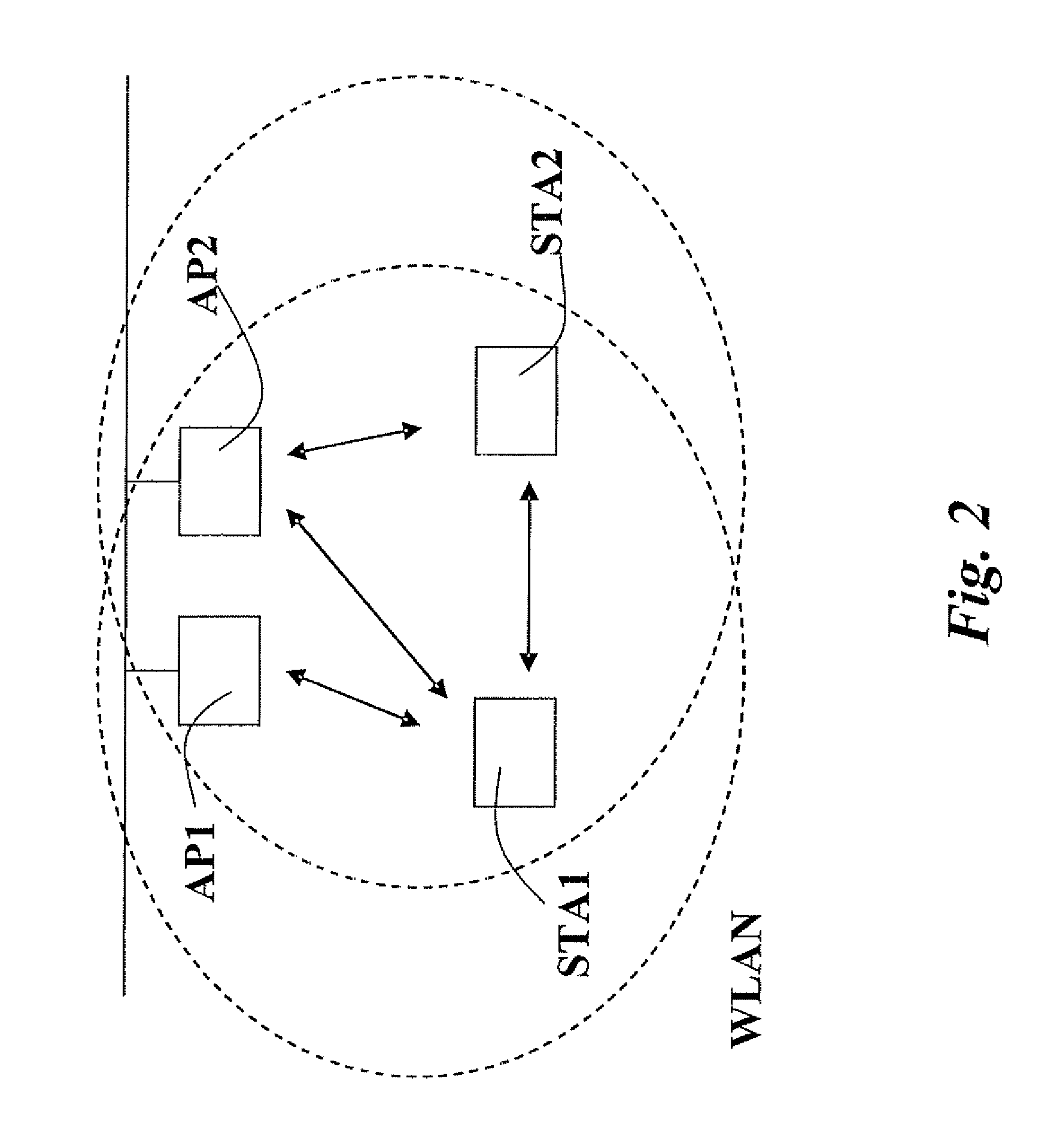Method and system for dynamic spectrum allocation, and computer program product therefor
a dynamic spectrum and computer program technology, applied in the field of dynamic spectrum allocation techniques, can solve the problems of many frequency bands being under-exploited both in time and spa
- Summary
- Abstract
- Description
- Claims
- Application Information
AI Technical Summary
Benefits of technology
Problems solved by technology
Method used
Image
Examples
Embodiment Construction
[0027]The functional block diagram shown in FIG. 1 is schematically representative of a communication network including two base stations BS1 and BS2 that are part of a (larger) operator network ON that manages (i.e., controls) spectrum usage policies via a policy server PS. These policies can be certified by the network operator using digital certificates CE.
[0028]In the exemplary arrangement shown, the base stations BS1 and BS2 are configured to sense, through antennas A1 and A2 respectively, the local spectrum usage by scanning specific bands. The base stations BS1 and BS2 are thus in a position to provide to the policy server PS detailed information concerning what bands are currently exploited in the geographical area covered by the sensing action.
[0029]Scan results are reported back to the policy server PS or any dedicated server in the core network in the network ON. This server is configured to develop specific policies for each cell, based on scan results and general policy...
PUM
 Login to View More
Login to View More Abstract
Description
Claims
Application Information
 Login to View More
Login to View More - R&D
- Intellectual Property
- Life Sciences
- Materials
- Tech Scout
- Unparalleled Data Quality
- Higher Quality Content
- 60% Fewer Hallucinations
Browse by: Latest US Patents, China's latest patents, Technical Efficacy Thesaurus, Application Domain, Technology Topic, Popular Technical Reports.
© 2025 PatSnap. All rights reserved.Legal|Privacy policy|Modern Slavery Act Transparency Statement|Sitemap|About US| Contact US: help@patsnap.com



